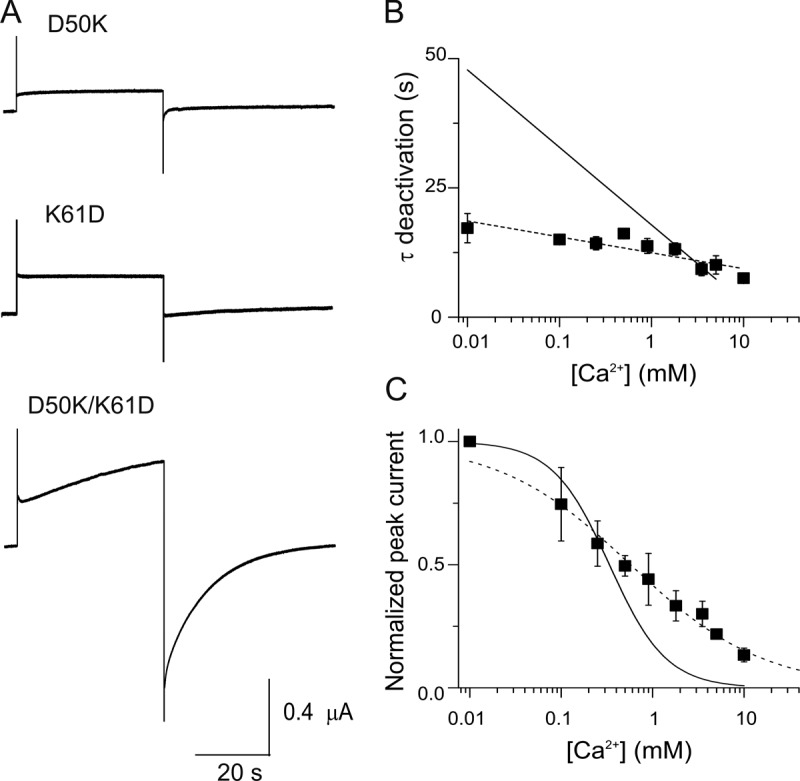Figure 5.

Exchanging the positions of the negative (D50) and positive (K61) residues partially rescues the wild-type hCx26 regulation by Ca2+. (A) Current traces elicited by a pulse to 0 mV from a holding potential of −80 mV are shown for oocytes expressing D50K, K61D, or D50K/K61D mutant hemichannels in 1.8 mM Ca2+. (B) Deactivation time constants for oocytes expressing D50K/K61D mutant hemichannels (closed squares). The solid line corresponds to best fits to the average data for wild-type hemichannels (from Fig. 1 C). The dotted line is the best linear fit to the data from double mutant D50K/K61D hemichannels. (C) [Ca2+] dose–response relations for oocytes expressing D50K/K61D mutant hemichannels (closed squares). The solid and dotted lines correspond to the best fits to the data of a Hill equation (Eq. 1) for wild-type and double mutant D50K/K61D hemichannels. The data represent mean ± SEM of at least three independent measurements.
